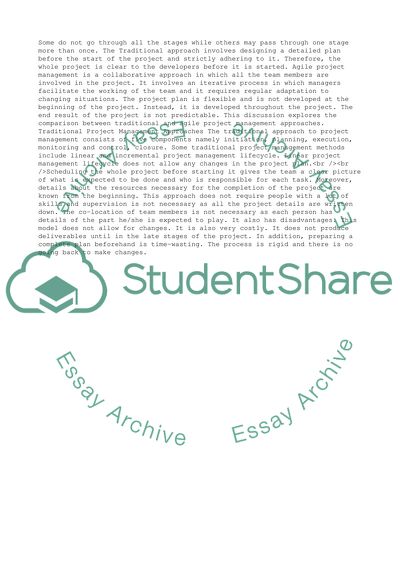Cite this document
(A Systematic Comparison between Traditional and Agile Methods Report Example | Topics and Well Written Essays - 2000 words, n.d.)
A Systematic Comparison between Traditional and Agile Methods Report Example | Topics and Well Written Essays - 2000 words. https://studentshare.org/management/1445445-a-systematic-comparison-between-traditional-and
A Systematic Comparison between Traditional and Agile Methods Report Example | Topics and Well Written Essays - 2000 words. https://studentshare.org/management/1445445-a-systematic-comparison-between-traditional-and
(A Systematic Comparison Between Traditional and Agile Methods Report Example | Topics and Well Written Essays - 2000 Words)
A Systematic Comparison Between Traditional and Agile Methods Report Example | Topics and Well Written Essays - 2000 Words. https://studentshare.org/management/1445445-a-systematic-comparison-between-traditional-and.
A Systematic Comparison Between Traditional and Agile Methods Report Example | Topics and Well Written Essays - 2000 Words. https://studentshare.org/management/1445445-a-systematic-comparison-between-traditional-and.
“A Systematic Comparison Between Traditional and Agile Methods Report Example | Topics and Well Written Essays - 2000 Words”. https://studentshare.org/management/1445445-a-systematic-comparison-between-traditional-and.


